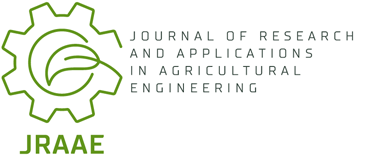Current issue
Online First
Archive
Instructions for Authors
Guide for Authors
Peer Review Policy
Research Ethics Policy
Crossmark Policy
Ghostwriting and Guest Authorship
Copyright
Open Access Policy
Plagiarism
About the Journal
Aim and Scope
Scientific Board
Publisher
Editorial Board
Indexing in Databases
Personal Data Protection
Repository Policy
Contact
ORIGINAL PAPER
The influence of effective microorganisms for some of physical and water properties on arable-humus horizons of mineral soils
Journal of Research and Applications in Agricultural Engineering 2007;52(3):73-77
KEYWORDS
ABSTRACT
The objective of the performed investigations was to recognise the influence of effective microorganisms (EM) on the basic physical and water properties of the arable-humus levels of mineral soils. The experimental soil material was obtained from arable lands: grey-brown podsolic soils and black earth. Samples for laboratory analyses were collected from a pot experiment established in controlled conditions. The following parameters were determined in the examined soils: texture composition, soil density, solid state density, total and drainage porosity, filtration coefficient, soil water binding potentials as well as potential and useful retention. The obtained research results revealed that the addition to the soil of live EM cultures changed most of its physical and water properties and that different doses of EM cultures exerted a different effect on soil properties, especially on porosity, filtration and water availability for plants.
REFERENCES (17)
1.
Baranowski A.: Preparat „Efektywne Mikroorganizmy”-próby zastosowania w rolnictwie. Przegląd hodowlany, 4/2004: 26–27, 2004.
2.
Gajda A., Igras J.: Określenie produkcyjnych i ekologicznych skutków stosowania preparatu EM – A w uprawie zbóż i rzepaku. IUNG, Zakład Żywienia Roślin i Nawożenia, Puławy, 2003.
3.
Higa T.: Rewolucja w ochronie naszej planety, Fundacja Rozwój, SGGW, Warszawa, 2003.
4.
Klute A.: Water retention: Laboratory methods. In: Klute A. (Ed.). Methods of Soil Analysis, Part 1: Physical and Mineralogical Methods. 2nd edn. Agron. Monogr. 9 ASA and SSSA, Madison, Wi., 1986.
5.
Klute A., Dirksen C.: Hydraulic conducticity and difusivity: laboratory methods. In: Klute A. (Ed.). Methods of Soil Analysis, Part 1: Physical and Mineralogical Methods. 2nd edn. Agron. Monogr. 9 ASA and SSSA, Madison, Wi., 1986.
6.
Kobielska Z.: Technologia Efektywnych Mikroorganizmów. Obserwator, 35, 2005, www.emgreen.pl.
7.
Krygowski B.: Geografia fizyczna Niziny Wielkopolskiej. Cz. I. Geomorfologia. PTPN, Poznań, 1961.
8.
Mocek A., Drzymała S., Maszner P.: Geneza, analiza i klasyfikacja gleb. Wyd. AR Poznań, 2004.
9.
Polski Komitet Normalizacyjny (1998a): Polska Norma PN-R-04032: Gleby i utwory mineralne. Pobieranie próbek i oznaczanie składu granulometrycznego, Warszawa, ss.12.
10.
Polski Komitet Normalizacyjny (1998b): Polska Norma PN-R-04033: Gleby i utwory mineralne. Podział na frakcje i grupy granulometryczne, Warszawa, ss.12.
13.
Schneider Z.: Wnioski wynikające z odkrycia, że Efektywne Mikroorganizmy (bądź część szczepów spośród kilkudziesięciu) tworzą dwuwarstwowe kapsuły żelowe, referat, (mscr), 2005a.
14.
Schneider Z.: Postulowana rola kompleksu EM w ulepszaniu gleby oraz w pozyskiwaniu przyswajalnych minerałów dla roślin, referat, (mscr), 2005b.
15.
Soil Conservation Service: Soil Survey laboratory methods manual. Soil Survey. Invest. Raport No. 42. U.S. Dept. Agric., Washington, DC, 1992.
16.
Zajączkowski P., Sowiński W.: Jaka gleba, taki plon. Technologia Efektywnych Mikroorganizmów. Biuletyn informacyjny, Greenland, Technologia EM, Puławy, 2001.
Share
RELATED ARTICLE
We process personal data collected when visiting the website. The function of obtaining information about users and their behavior is carried out by voluntarily entered information in forms and saving cookies in end devices. Data, including cookies, are used to provide services, improve the user experience and to analyze the traffic in accordance with the Privacy policy. Data are also collected and processed by Google Analytics tool (more).
You can change cookies settings in your browser. Restricted use of cookies in the browser configuration may affect some functionalities of the website.
You can change cookies settings in your browser. Restricted use of cookies in the browser configuration may affect some functionalities of the website.


